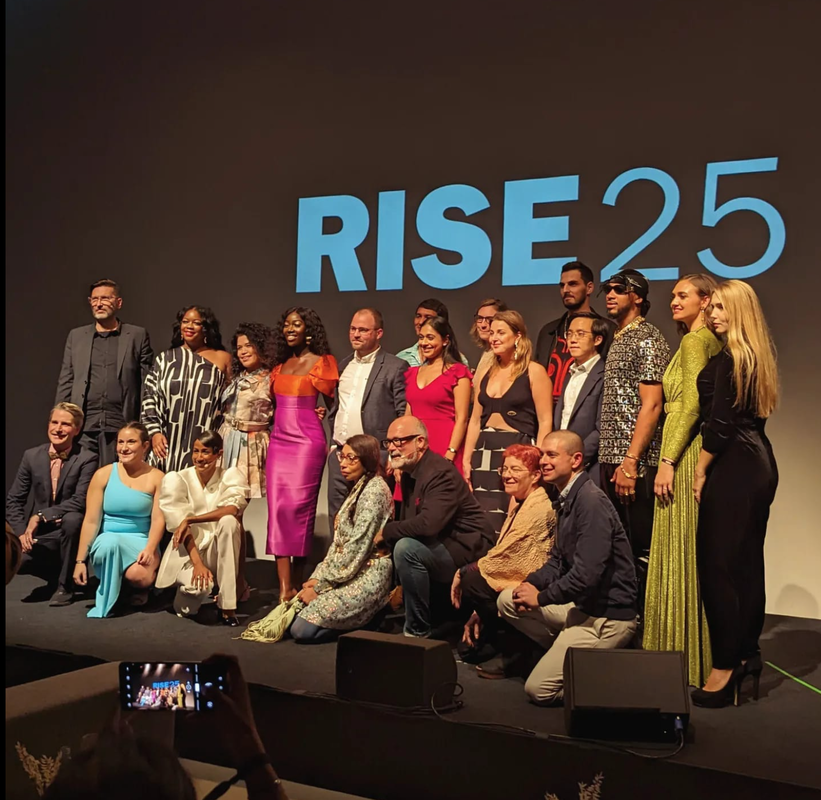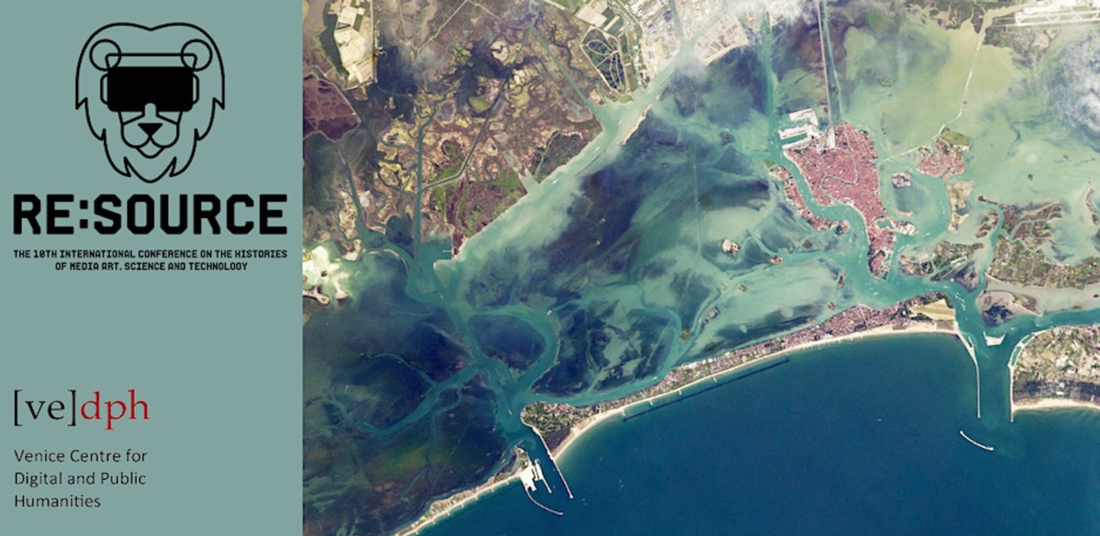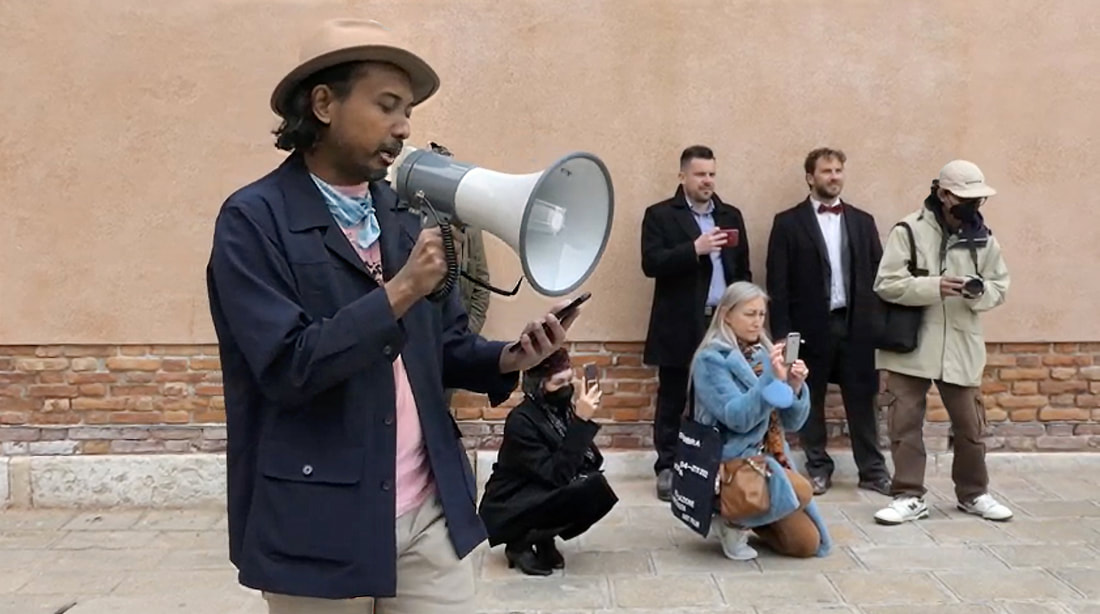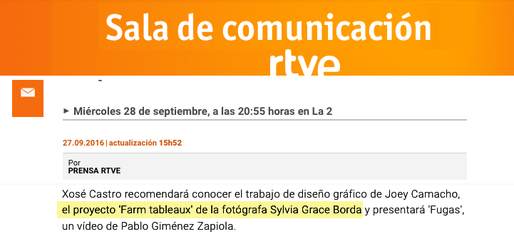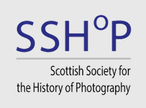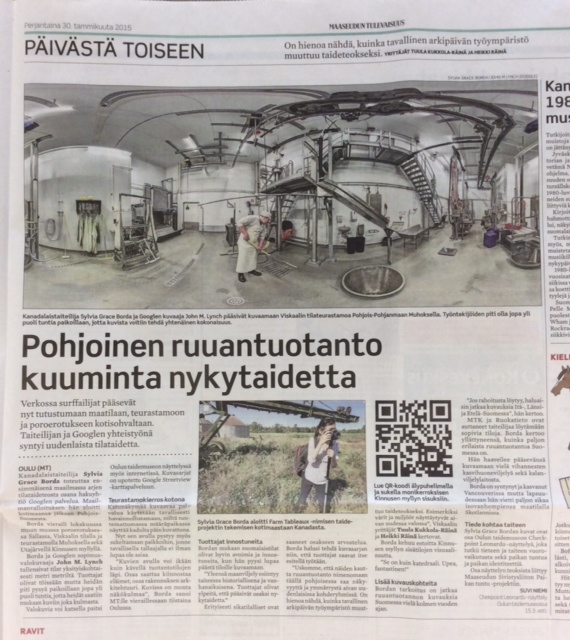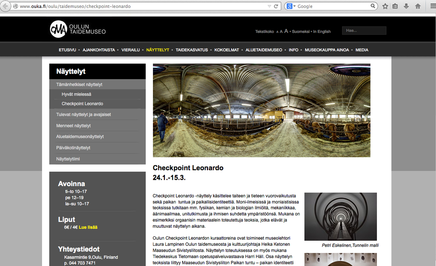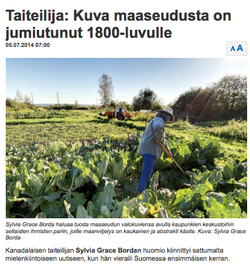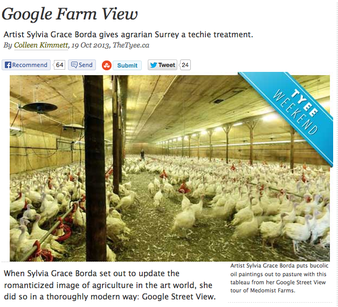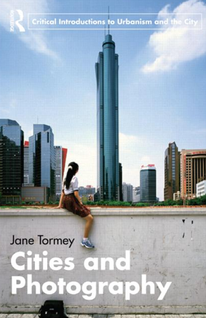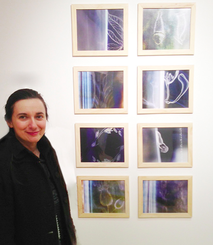| | NEWS | |
|
Vancouver Fruit Tree histories and communities' book co-authored by Sylvia Grace Borda with the Coast Salish Plant Nursery and in conjunction with the Vancouver Fruit Tree Project wins the City of Vancouver Heritage Award for Education and Awareness.
A copy of this award winning book can be downloaded free at https://www.vancouverfruittree.com/vancouver-fruit-trees-history-and-communities |
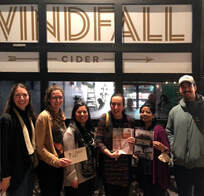
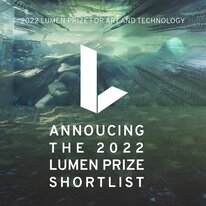
|
2022
'Vancouver Fruit Tree histories and communities' is launched as part of a special event at Windfall Cidery in North Vancouver in November by the VFTP. Project collaboration in creating interactive social climate justice work in Ethiopia was shortlisted for the Futures Technology Lumen Prize award 2022. Special performance of a collaborative endeavour, formation of a 'Tree Circle,' at the Venice Biennale Collateral Pavilion, PERA+FLORA+FAUNA (May 2022) |
|
Vancouver Art Gallery acquired in the Spring a set of images from the photographic and interactive art series 'Farm Tableaux'. These pioneering artworks were produced by Sylvia in conjunction with Google Trusted Photographer, John M Lynch, in 2013 for both online viewing in Google Street View and for exhibition. |
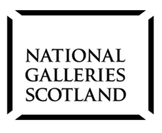
2021
The National Galleries of Scotland have recently acquired a set of prints from EK Modernism that will feature in the rescheduled Temples to Tenements exhibition curated by Louise Pearson for 2023.
The National Galleries of Scotland have recently acquired a set of prints from EK Modernism that will feature in the rescheduled Temples to Tenements exhibition curated by Louise Pearson for 2023.
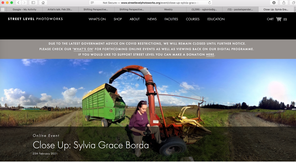
Artist's talk at Street Level Photoworks
February 25
Sylvia discussed her working practice in Scotland over the last decade and some of her latest projects happening in Canada.
A recording of the event can be accessed via Street Level's YouTube channel at www.youtube.com/watch?v=YvbdsJxDefo
February 25
Sylvia discussed her working practice in Scotland over the last decade and some of her latest projects happening in Canada.
A recording of the event can be accessed via Street Level's YouTube channel at www.youtube.com/watch?v=YvbdsJxDefo
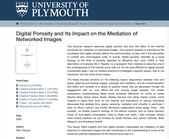
Autumn 2020
PhD thesis Digital Porosity and Its Impact on the Mediation of Networked Images by Claudia Pilsl (University of Plymouth, 2020) considers how digital porosity manipulates the mediation of data attached to networked images and also contributes to the understanding of some of the social and political implications of the Internet since web 2.0. As part of her thesis award, Pilsl examines extensively works by Rachel Rose, Mishka Henner, and Sylvia Grace Borda in order to define how these artists' critique and create a new mediation of networked images.
PhD thesis Digital Porosity and Its Impact on the Mediation of Networked Images by Claudia Pilsl (University of Plymouth, 2020) considers how digital porosity manipulates the mediation of data attached to networked images and also contributes to the understanding of some of the social and political implications of the Internet since web 2.0. As part of her thesis award, Pilsl examines extensively works by Rachel Rose, Mishka Henner, and Sylvia Grace Borda in order to define how these artists' critique and create a new mediation of networked images.
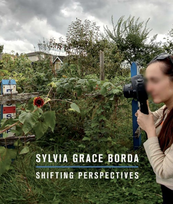
Summer 2020
Artist monograph
Heritage House Publications and Surrey Art Gallery have collaborated and co-published an anthology of Sylvia's artwork and engaged practice under
the title 'Shifting Perspectives'
see https://www.heritagehouse.ca/book/sylvia-grace-borda/ for more details.
Book reviews: Galleries West Art Magazine
www.gallerieswest.ca/magazine/books/sylvia-grace-borda/
Preview Art Magazine https://preview-art.com/preview/close-up-sylvia-borda-and-the-complexities-of-place/
Artist monograph
Heritage House Publications and Surrey Art Gallery have collaborated and co-published an anthology of Sylvia's artwork and engaged practice under
the title 'Shifting Perspectives'
see https://www.heritagehouse.ca/book/sylvia-grace-borda/ for more details.
Book reviews: Galleries West Art Magazine
www.gallerieswest.ca/magazine/books/sylvia-grace-borda/
Preview Art Magazine https://preview-art.com/preview/close-up-sylvia-borda-and-the-complexities-of-place/
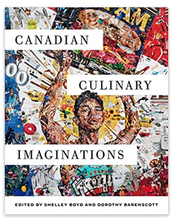
Book chapter
In the twenty-first century, food is media? it is not just on plates, but in literature and on screens, displayed in galleries, studios, and public places. Sylvia has contributed a chapter on food and art to the Canadian Culinary Imaginations publication, which asks how memories, emotions, cultures, practices, and tastes make Canadian identity unique.
In the twenty-first century, food is media? it is not just on plates, but in literature and on screens, displayed in galleries, studios, and public places. Sylvia has contributed a chapter on food and art to the Canadian Culinary Imaginations publication, which asks how memories, emotions, cultures, practices, and tastes make Canadian identity unique.
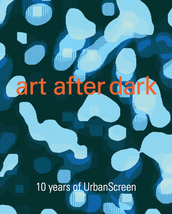
March 2020
A critical discussion about the artist's development of Aerial Fields by UK critic and writer, Paula Blair, was featured in the book, Art after Dark: 10 Years of UrbanScreen.
A critical discussion about the artist's development of Aerial Fields by UK critic and writer, Paula Blair, was featured in the book, Art after Dark: 10 Years of UrbanScreen.

February 2020
Sylvia was invited to present on how the arts can be a critical platform to help in climate change adaptation. She was part of one of several panels that were offered at the February Canadian national conference on climate change and resilience, Adaptation 2020, that was hosted by the Fraser Basin Council in Vancouver, BC (Feb 19-21.) Her report on the event can be found at https://w4c.org/news/adaptation-canada-2020-eyes-sylvia-grace-borda-women4climate-vancouver
2019
Sylvia launched 'Climate Arts for Resilient Environments' (C.A.R.E.) in Canada.
Since March Sylvia has been invited to join the C40 Cities || Women4Climate Change alliance, and is working to promote how the arts can be a platform from which climate resilience can be tackled.
In January Sylvia presented an engaging overview to how Science and Art have been linked disciplines from the part to present as part of the Science World Lecture series in Vancouver, BC.
Sylvia was invited to present on how the arts can be a critical platform to help in climate change adaptation. She was part of one of several panels that were offered at the February Canadian national conference on climate change and resilience, Adaptation 2020, that was hosted by the Fraser Basin Council in Vancouver, BC (Feb 19-21.) Her report on the event can be found at https://w4c.org/news/adaptation-canada-2020-eyes-sylvia-grace-borda-women4climate-vancouver
2019
Sylvia launched 'Climate Arts for Resilient Environments' (C.A.R.E.) in Canada.
Since March Sylvia has been invited to join the C40 Cities || Women4Climate Change alliance, and is working to promote how the arts can be a platform from which climate resilience can be tackled.
In January Sylvia presented an engaging overview to how Science and Art have been linked disciplines from the part to present as part of the Science World Lecture series in Vancouver, BC.

Sylvia has also just recently completed a project as the inaugural artist-in-residence at the Minoru Centre for Active Living. The work was part of a commission offered through the Public Art programme at the City of Richmond, BC. Her newest Google Street View portrait work is described and can be found online at https://minorucentre.ca/public-art/
2018
As an artist-educaor, Sylvia, was approached and awarded Kwantlen Polytechnic university's inaugural artist in residence position. She was commissioned to both teach and produce legacy artwork under the science-art banner.
2018
As an artist-educaor, Sylvia, was approached and awarded Kwantlen Polytechnic university's inaugural artist in residence position. She was commissioned to both teach and produce legacy artwork under the science-art banner.
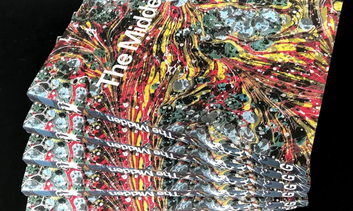
Sylvia's artwork was featured in The Midden publication [edited by Jenni Nurmenniemi and Tracey Warr, Helsinki: Garrett Publications, 2018]. The book explores the roles of art, fiction, and philosophy in relation to the future. It asks what post-fossil (fuelled) art and society might look like. In discussing the methods and instruments deployed by contemporary artists to address ecologies and ecological issues, including engagements with laboratories, museums, and cartography, it promotes an examination of the themes of binaries, entanglement, and post-sustainability. The book draws on the Frontiers in Retreat project, for which art research was carried out over a five-year period by 25 artists at sites throughout Europe.
2017
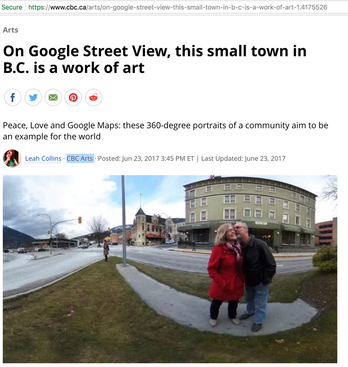
November
The Kissing Trail project was launched in November in Nelson, BC. The public was invited to participate and to add to Sylvia's seminal Google Street View project and take their own photographs across the City for both web viewing and exhibition. CBC Arts featured the Kissing Project and trail as part of its national contemporary arts media review earlier in the year see - www.cbc.ca/arts/on-google-street-view-this-small-town-in-b-c-is-a-work-of-art-1.4175526
The Kissing Trail project was launched in November in Nelson, BC. The public was invited to participate and to add to Sylvia's seminal Google Street View project and take their own photographs across the City for both web viewing and exhibition. CBC Arts featured the Kissing Project and trail as part of its national contemporary arts media review earlier in the year see - www.cbc.ca/arts/on-google-street-view-this-small-town-in-b-c-is-a-work-of-art-1.4175526
July
During July 26-29 at CCA-Glasgow, Sylvia's project work from the Lumsden Biscuit project was profiled as part of wider discussions about the role of contemporary art, and enterprise in creating social impact. see http://www.ssw.org.uk/?p=6829
A celebration of Sylvia's Latvian wall murals has taken place on July 1. The project also made national Latvian TV. The official launch will be September 9 with support from the SERDE Arts Centre, and the regional tourism board.
During July 26-29 at CCA-Glasgow, Sylvia's project work from the Lumsden Biscuit project was profiled as part of wider discussions about the role of contemporary art, and enterprise in creating social impact. see http://www.ssw.org.uk/?p=6829
A celebration of Sylvia's Latvian wall murals has taken place on July 1. The project also made national Latvian TV. The official launch will be September 9 with support from the SERDE Arts Centre, and the regional tourism board.
|
|
The Apples mural project in Aizpute, Latvia made
national TV. The clip illustrates a number of future Apple mural concept sketches by Sylvia Grace Borda, and also includes some footage of Canadian film scenic painter, Reiner Derdau, who is describing the importance of the project to assist in regard to the development of the area's regional economy. |
June
Sylvia's project archive from 'EK Modernism' was included in the exhibition Sites of Assembly (June 23 - Aug 13, 2017) at the Morris and Helen Belkin Art Gallery, Vancouver, British Columbia co-curated by Gabrielle Moser and Lorna Brown.
A review about the exhibition by Michael Turner can be found at http://www.preview-art.com/previews/06-2017/sitesofassembly.html
A solo exhibition of new work developed by the artist entitled the Kissing Project opened at the Oxygen Art Centre, Nelson, BC. This new project has seen the artist use pro-consumer 360 and VR technologies in order to continue her staging of artworks in Google Street View.
On June 15 a new body of work opened including drawings, paintings, and artist books about the arctic tundra as part of the seminal Mustarinda Summer group exhibition in Finland.
Sylvia's project archive from 'EK Modernism' was included in the exhibition Sites of Assembly (June 23 - Aug 13, 2017) at the Morris and Helen Belkin Art Gallery, Vancouver, British Columbia co-curated by Gabrielle Moser and Lorna Brown.
A review about the exhibition by Michael Turner can be found at http://www.preview-art.com/previews/06-2017/sitesofassembly.html
A solo exhibition of new work developed by the artist entitled the Kissing Project opened at the Oxygen Art Centre, Nelson, BC. This new project has seen the artist use pro-consumer 360 and VR technologies in order to continue her staging of artworks in Google Street View.
On June 15 a new body of work opened including drawings, paintings, and artist books about the arctic tundra as part of the seminal Mustarinda Summer group exhibition in Finland.
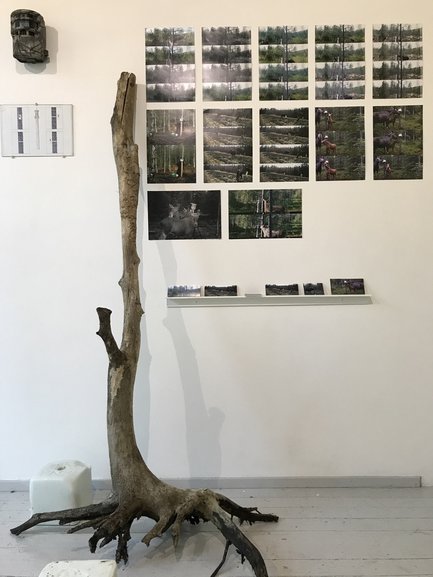
Installation shot of Sylvia's "Living Pictures" and "Hunting Cameras and Salt block" from Mustarinda Summer exhibition (June 2017)
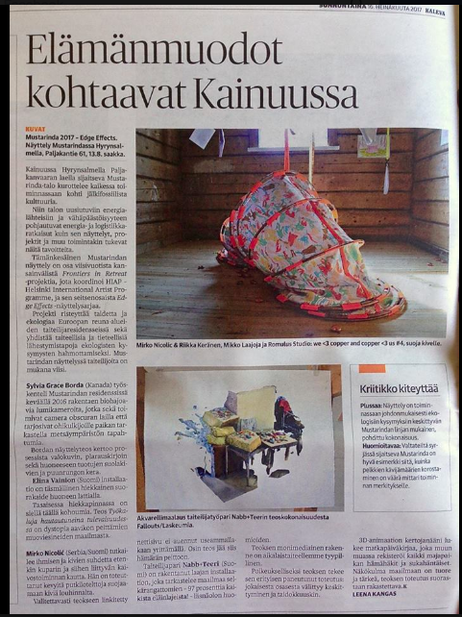
May
The seminal Canadian drone video artwork, Aerial Fields (2013), produced by Sylvia as part of her project 'This one's for the Farmer' at the Surrey Art Gallery has been reviewed by Liz Wells, Professor of Photographic Culture at Plymouth University in England and author of Photography: A Critical Introduction (Routledge, 1996; 2015). Wells' essay about Aerial Fields will be published and distributed by the Surrey Art Gallery, Canada, as part of the gallery's launch of an upcoming anthology on its UrbanScreen programme from 2010 to present.
The seminal Canadian drone video artwork, Aerial Fields (2013), produced by Sylvia as part of her project 'This one's for the Farmer' at the Surrey Art Gallery has been reviewed by Liz Wells, Professor of Photographic Culture at Plymouth University in England and author of Photography: A Critical Introduction (Routledge, 1996; 2015). Wells' essay about Aerial Fields will be published and distributed by the Surrey Art Gallery, Canada, as part of the gallery's launch of an upcoming anthology on its UrbanScreen programme from 2010 to present.

When the Light Shifts, Monday 6th March to April 1st, 2017
When the Light Shifts is a touring exhibition that brings together over fifteen of Scotland’s female photographers. The show represents a vibrant range of current practice, from intimate portraiture to experimental images of organic matter, to vital inquiries about what a camera is and how we use it in today’s world.
Photography is a powerful way to share our stories, to describe our realities – or our dreams – and to document what is important to us. The work of an evolving network of Scotland’s women photographers initiated by writer and curator Katherine Parhar, and is produced and curated in partnership with Napier University, Edinburgh.
Artists include: Arpita Shah, Susanne Ramsenthaler, Catherine Cameron, Sarah Fishlock, Karen Vaughan, Zoe Hammil, Sylvia Grace Borda, Kotryna Ula Kiliulyte, Margaret Mitchell, Jolanta Dolewska, Alicia Bruce, Sophie Gerrard, Nina Bacos, Mairead Keating, Iseult Timmermans, Helen Jones, Edyta Majewska and Melanie Letore.
When the Light Shifts is a touring exhibition that brings together over fifteen of Scotland’s female photographers. The show represents a vibrant range of current practice, from intimate portraiture to experimental images of organic matter, to vital inquiries about what a camera is and how we use it in today’s world.
Photography is a powerful way to share our stories, to describe our realities – or our dreams – and to document what is important to us. The work of an evolving network of Scotland’s women photographers initiated by writer and curator Katherine Parhar, and is produced and curated in partnership with Napier University, Edinburgh.
Artists include: Arpita Shah, Susanne Ramsenthaler, Catherine Cameron, Sarah Fishlock, Karen Vaughan, Zoe Hammil, Sylvia Grace Borda, Kotryna Ula Kiliulyte, Margaret Mitchell, Jolanta Dolewska, Alicia Bruce, Sophie Gerrard, Nina Bacos, Mairead Keating, Iseult Timmermans, Helen Jones, Edyta Majewska and Melanie Letore.
2016
LUMEN PRIZE WINNER - September 29
|
Sylvia's series, Farm Tableaux, produced in conjunction with John M Lynch was awarded the 2016 best project award for Net Art. An amazing achievement given that over 700 submissions were received globally for various Lumen prizes, and only 8 awards were given this year by the jury.
Read more about the winners at https://www.a-n.co.uk/news/virtual-reality-artwork-wins-2016-lumen-prize-for-digital-art |
Lumen Prize Short-list
September 12
September 12
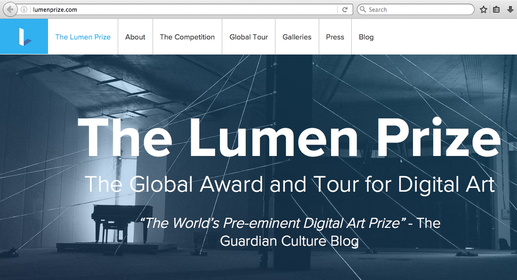
The Farm Tableaux series has been short-listed for the Lumen Prize in Net Art. A public seminar and gala presentation was held on September 29 in London to reveal the winners of the competition.
International Union for Conservation of Nature (IUCN)
Sylvia is proud to be presenting a set of case studies from her own socially engaged practice to illustrate how the arts can be catalysts for both innovation in contemporary image making and social policy at the UN International Union for Conservation of Nature (IUCN) World Congress forum "Planet at the Crossroads" this September. The forum has invited the world's most innovative strategic and global thinkers to discuss initiatives in how to meet the critical challenges and opportunities of our time, including the imperative to scale up action on biodiversity and sustainable development goals.
Sylvia is fortunate to be the only artist invited to participate as part of the IUCN World Congress, which meets every four years bringing together leaders from government, the public sector, non-governmental organizations, business, as well as UN agencies, and indigenous organizations together in order to decide on solutions to global environmental and developmental challenges. Read more about the conference at http://www.iucnworldconservationcongress.org/
Sylvia is proud to be presenting a set of case studies from her own socially engaged practice to illustrate how the arts can be catalysts for both innovation in contemporary image making and social policy at the UN International Union for Conservation of Nature (IUCN) World Congress forum "Planet at the Crossroads" this September. The forum has invited the world's most innovative strategic and global thinkers to discuss initiatives in how to meet the critical challenges and opportunities of our time, including the imperative to scale up action on biodiversity and sustainable development goals.
Sylvia is fortunate to be the only artist invited to participate as part of the IUCN World Congress, which meets every four years bringing together leaders from government, the public sector, non-governmental organizations, business, as well as UN agencies, and indigenous organizations together in order to decide on solutions to global environmental and developmental challenges. Read more about the conference at http://www.iucnworldconservationcongress.org/
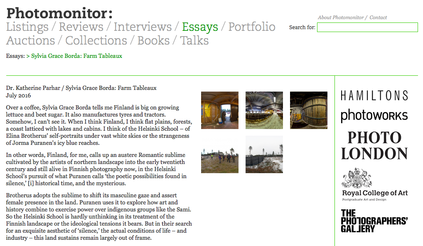
Dr Katherine Parhar has interviewed the artist and examined how her "Farm Tableaux Finland" series functions both in terms of art and activism - see the July edition of Photomonitor Magazine at
http://www.photomonitor.co.uk/2016/07/sylvia-grace-borda-farm-tableaux/
http://www.photomonitor.co.uk/2016/07/sylvia-grace-borda-farm-tableaux/
An excellent review about the opus 'Camera Histories' has been written up as part of the 2016 Summer edition of the Scottish Society for the History of Photography - see "The only thing that’s changed is everything " at
http://sshop.org.uk/project/rebecca-travis/
|
Capture Photography Festival, Vancouver, Canada
As part of the Panel Discussion: Writing with Light, Sylvia spoke about the on-going evolution of digital photography. She also wrote an essay that critiqued the potential implications of our consumptive digital image habits in relation to the Web. See https://capturephotofest.com/beyond-composition-critiquing-social-network-imaging-whilst-reconsidering-our-digital-future/ |
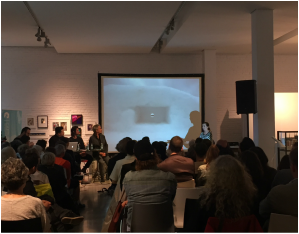
|
Sylvia presented a paper on the preservation concerns of working within digital native platforms as part of the Helsinki Photomedia week in March at Aalto University. See a review of her work at
http://collectingsocialphoto.nordiskamuseet.se/reflections-from-the-helsinki-photomedia-conference/
http://collectingsocialphoto.nordiskamuseet.se/reflections-from-the-helsinki-photomedia-conference/
-----------------------------
2015
2015
Architectural research and writing
Sylvia was commissioned to contribute a chapter for Reiach and Hall Architects' 5oth anniversary publication launched this Autumn 2015. Her essay entitled 'Rethinking Towns & Cities: Becoming generous' appears in the published book, Stravaigers (ISBN 978 0 9556148 6 6) or can be read online here.
Related to this essay and her research into New Towns, Sylvia was also recently invited to write a reflective essay for the Scottish Civic Trust about the state of housing today. Her essay co-written with Dr Ann
Borda addresses how the 'House acts as a social agent,' and this paper was included as part of the 2015 Conference on Housing in Scotland essential reading list --> see http://www.scottishcivictrust.org.uk/blog/sylvia-grace-borda-and-ann-borda-considering-the-house-as-social-agent/
Sylvia was commissioned to contribute a chapter for Reiach and Hall Architects' 5oth anniversary publication launched this Autumn 2015. Her essay entitled 'Rethinking Towns & Cities: Becoming generous' appears in the published book, Stravaigers (ISBN 978 0 9556148 6 6) or can be read online here.
Related to this essay and her research into New Towns, Sylvia was also recently invited to write a reflective essay for the Scottish Civic Trust about the state of housing today. Her essay co-written with Dr Ann
Borda addresses how the 'House acts as a social agent,' and this paper was included as part of the 2015 Conference on Housing in Scotland essential reading list --> see http://www.scottishcivictrust.org.uk/blog/sylvia-grace-borda-and-ann-borda-considering-the-house-as-social-agent/
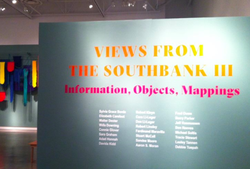
Visual arts exhibition: Sylvia presented a series of 30 photographic images from FARM TABLEAUX created in collaboration with John M Lynch as well as 'Every Bus Stop in Surrey, BC' as part of 'Views from the Southbank III' exhibition at the Surrey Art Gallery, BC, Canada. Her work was showcased as part of a larger project curated by Jordan Strom to celebrate the Surrey Art Gallery's 40th anniversary. Views from the Southbank III which ran from September 19 to December 13, 2015.
|
Finnish newspaper: Arts & Culture Review 29.01.2015
Viewers can now visit farms, slaughterhouses and more virtually Canadian artist Sylvia Grace Borda is the first to take the everyday and make it into an art space by staging tableaux within the Google Street view engine. Borda has visited reindeer round-ups in Salla, and producers at Muhos and Utajärvi Kinnunen. Working with Google's contract photographer, John M. Lynch, she has had recorded farm facilities in detail, meter by meter. Street View typically illustrates cities and not farms. Now Borda's work also allows viewers to dive into places that are private enterprises where access is limited. "The artworks offer a number of points of view for audiences to find their own interests," says Borda during the interview. Farmers Tuula and Heikki Räinä, who participated in the project, said to the newspaper "We believe that through Sylvia's work the public can better understand food production and what farmers do on a day to day basis. It's great that Sylvia's processes can illustrate how ordinary farm environments can become works of art. The colors and milieus of her work offer everything we do in completely a new light. " |
|
January
The Scottish Civic Trust included Sylvia's 'A Holiday in Glenrothes' series as part of its national curriculum. The project was cited as an example of how to observe and photograph the built environment. Sylvia also was invited to contribute and develop a set of learning tutorials for young persons from 14-16. |

|
|
Working River Public Art site was nominated and made into a Geocache site in June 2014. Go visit the geocache website to find the co-ordinates of the hidden treasure box. |

|
----------------------------
2014
2014
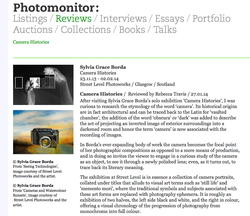
Photomonitor review of Camera Histories
http://www.photomonitor.co.uk/2014/01/sylvia-grace-borda-camera-histories/
Reviewed by Rebecca Travis / 27.01.14
After visiting Sylvia Grace Borda’s solo exhibition ‘Camera Histories’, I was curious to research the etymology of the word ‘camera’. Its historical origins are in fact architectural and can be traced back to the Latin for ‘vaulted chamber’, the addition of the word ‘obscura’ or ‘dark’ was added to describe the act of projecting an inverted image of exterior surroundings into a darkened room and hence the term ‘camera’ is now associated with the recording of images.
http://www.photomonitor.co.uk/2014/01/sylvia-grace-borda-camera-histories/
Reviewed by Rebecca Travis / 27.01.14
After visiting Sylvia Grace Borda’s solo exhibition ‘Camera Histories’, I was curious to research the etymology of the word ‘camera’. Its historical origins are in fact architectural and can be traced back to the Latin for ‘vaulted chamber’, the addition of the word ‘obscura’ or ‘dark’ was added to describe the act of projecting an inverted image of exterior surroundings into a darkened room and hence the term ‘camera’ is now associated with the recording of images.
In Borda’s ever expanding body of work the camera becomes the focal point of her photographic compositions as opposed to a mere means of production, and in doing so invites the viewer to engage in a curious study of the camera as an object, to see it through a newly polished lens; even, as it turns out, to trace back its literary meaning.
The exhibition at Street Level is in essence a collection of camera portraits, collated under titles that allude to visual art terms such as ‘still life’ and ‘memento mori’, where the traditional symbols and subjects associated with these art forms are replaced with photography ephemera. It is roughly an exhibition of two halves, the left side black and white, and the right in colour, offering a visual chronology of the progression of photography from monochrome into full colour.
To echo Borda’s visual timescale, it seems appropriate to begin with Seeing Technologies, a series of carefully composed black and white prints featuring cameras framed delicately by gesturing human hands. These negative prints possess a great luminosity spreading from the fingertips, bringing to mind a sense of power and energy in our ability to harness images from the world into tangible prints and drawing attention to the use of the hands as a tool in the photographic and developing processes. The stark monochrome and simple unframed presentation of these prints belie their intricacies. There is a complex layering of light and dark, the addition of spidery diagrams and geometric shapes which calibrate certain details of the negative forms.
This intricacy is continued through Interrogations of a Camera, framed x-rays of camera bodies that reveal their inner mechanisms. Initially they appear as abstract shapes that at once become blueprint drawings for futuristic buildings or delicate architectural floor plans (an interesting observation considering the architectural origins of ‘camera’) before coming back into focus as ethereal alternative representations of these machines that feel so universally familiar.
The colour images in Camera Still Life – A Memento Mori are appropriated from online auction sites. The vintage camera equipment, now redundant in the digital age, possesses the warmth and aesthetically pleasing quality of antiques, yet the title (Latin meaning ‘a reminder of death’) hints at something darker, not just the short lifespan of much technological equipment but also our own mortality, and the notion of ‘immortalising’ a subject through film.
Through delicate alternative ways of seeing the camera as a compositional subject, Camera Histories encourages a re-evaluation of this technology that has seamlessly become ingrained in our daily existence. The works, simply presented, take in many traditions of the medium, from darkroom experiments to ocular mechanisms, cliché sunsets to Google Earth, exploring its position historically, commercially and aesthetically.
As cameras become increasingly covert, assimilated into other technologies and apps, Camera Histories draws our gaze back to the physicality of photography, the alchemy and process of photo creation, and most importantly seeks a consideration towards the objects that enable the images which flood our daily vision.
The exhibition at Street Level is in essence a collection of camera portraits, collated under titles that allude to visual art terms such as ‘still life’ and ‘memento mori’, where the traditional symbols and subjects associated with these art forms are replaced with photography ephemera. It is roughly an exhibition of two halves, the left side black and white, and the right in colour, offering a visual chronology of the progression of photography from monochrome into full colour.
To echo Borda’s visual timescale, it seems appropriate to begin with Seeing Technologies, a series of carefully composed black and white prints featuring cameras framed delicately by gesturing human hands. These negative prints possess a great luminosity spreading from the fingertips, bringing to mind a sense of power and energy in our ability to harness images from the world into tangible prints and drawing attention to the use of the hands as a tool in the photographic and developing processes. The stark monochrome and simple unframed presentation of these prints belie their intricacies. There is a complex layering of light and dark, the addition of spidery diagrams and geometric shapes which calibrate certain details of the negative forms.
This intricacy is continued through Interrogations of a Camera, framed x-rays of camera bodies that reveal their inner mechanisms. Initially they appear as abstract shapes that at once become blueprint drawings for futuristic buildings or delicate architectural floor plans (an interesting observation considering the architectural origins of ‘camera’) before coming back into focus as ethereal alternative representations of these machines that feel so universally familiar.
The colour images in Camera Still Life – A Memento Mori are appropriated from online auction sites. The vintage camera equipment, now redundant in the digital age, possesses the warmth and aesthetically pleasing quality of antiques, yet the title (Latin meaning ‘a reminder of death’) hints at something darker, not just the short lifespan of much technological equipment but also our own mortality, and the notion of ‘immortalising’ a subject through film.
Through delicate alternative ways of seeing the camera as a compositional subject, Camera Histories encourages a re-evaluation of this technology that has seamlessly become ingrained in our daily existence. The works, simply presented, take in many traditions of the medium, from darkroom experiments to ocular mechanisms, cliché sunsets to Google Earth, exploring its position historically, commercially and aesthetically.
As cameras become increasingly covert, assimilated into other technologies and apps, Camera Histories draws our gaze back to the physicality of photography, the alchemy and process of photo creation, and most importantly seeks a consideration towards the objects that enable the images which flood our daily vision.
Solo exhibition "Camera Histories" at Street Level Photoworks, Glasgow
opened in November 2013 with artist talk at Napier University, Edinburgh and at Trongate Arts Centre, Glasgow
opened in November 2013 with artist talk at Napier University, Edinburgh and at Trongate Arts Centre, Glasgow
‘Camera Histories’ is an exhibition of works by Borda, in which the apparatus becomes the central subject of her digital compositions - found & staged photographs of cameras are manipulated and montaged to create unconventional portraits. Typically the camera is not the subject matter of a photograph: it instead stays hidden between photographer and image.
Whether directly using found images, as in ‘Cameras and Watercolour Sunsets’ (2010 to present) and 'Still Life' (2013), or staged images, as presented in ‘Interrogations of a Camera’ (2012) and ‘Seeing Technologies’ (2011), Borda’s work causes us to consider our responses to the worthiness of the camera as subject, and that to the evolution of digital photographic technologies at the expense of traditional film media.
Alongside these considerations, the artist incorporates pop cultural and photo lab elements into her completed works. Working with the 8”x12” print that is traditional of wedding photography and school pictures, Borda montages both images and cultural markers, crossing different frames of reference. In ‘Still Life’ (2013), for example, Borda pays homage to the development of early photographic imagery from the 1840s, when it was commonplace for photographers to stage still life images of flower vases and silverware that replicated the formal qualities of 17th and 18th century Dutch paintings.
Upon closer inspection of this series, one notices that the aestheticised camera arrangements are at odds with their surrounding environment: Borda’s extraction of online auction images, which present the cameras as both commodity and part of a larger photographic directive, draws new representation of motive and open-forum imagery into her aesthetic montages. Contrasting the cultural signifiers of two different times in history through composition and subject, Borda creates a historical dialogue of photography’s common threads, development and misalignment.
Whether directly using found images, as in ‘Cameras and Watercolour Sunsets’ (2010 to present) and 'Still Life' (2013), or staged images, as presented in ‘Interrogations of a Camera’ (2012) and ‘Seeing Technologies’ (2011), Borda’s work causes us to consider our responses to the worthiness of the camera as subject, and that to the evolution of digital photographic technologies at the expense of traditional film media.
Alongside these considerations, the artist incorporates pop cultural and photo lab elements into her completed works. Working with the 8”x12” print that is traditional of wedding photography and school pictures, Borda montages both images and cultural markers, crossing different frames of reference. In ‘Still Life’ (2013), for example, Borda pays homage to the development of early photographic imagery from the 1840s, when it was commonplace for photographers to stage still life images of flower vases and silverware that replicated the formal qualities of 17th and 18th century Dutch paintings.
Upon closer inspection of this series, one notices that the aestheticised camera arrangements are at odds with their surrounding environment: Borda’s extraction of online auction images, which present the cameras as both commodity and part of a larger photographic directive, draws new representation of motive and open-forum imagery into her aesthetic montages. Contrasting the cultural signifiers of two different times in history through composition and subject, Borda creates a historical dialogue of photography’s common threads, development and misalignment.
-----------------------------
2013
2013
|
October 2013: Excellent review of Google Street View net artworks created by Sylvia Grace Borda in partnership with John M Lynch http://thetyee.ca/ArtsAndCulture/2013/10/19/Google-Farm-View/ |
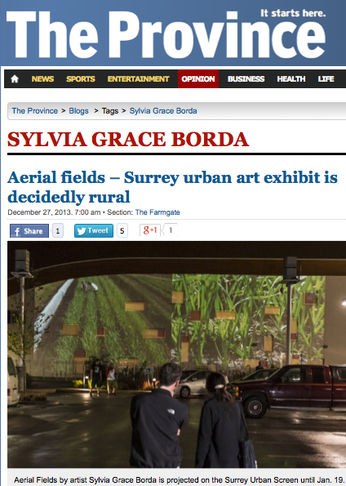
Review of 'Aerial Fields' in the Province newspaper
http://blogs.theprovince.com/tag/sylvia-grace-borda/
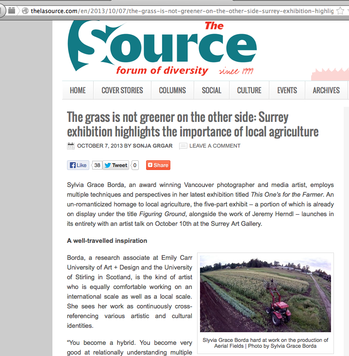 Sonja Grgar reviews Sylvia Grace Borda's exhibition 'This one's for the farmer' at the Surrey Art Gallery, Canada.
Sonja Grgar reviews Sylvia Grace Borda's exhibition 'This one's for the farmer' at the Surrey Art Gallery, Canada.
The Source Newspaper reviews 'This one's for the farmer'
http://thelasource.com/en/2013/10/07/the-grass-is-not-greener-on-the-other-side-surrey-exhibition-highlights-the-importance-of-local-agriculture/
http://thelasource.com/en/2013/10/07/the-grass-is-not-greener-on-the-other-side-surrey-exhibition-highlights-the-importance-of-local-agriculture/
|
Article about the artist's engagement in the 'REMIXX' cultural project - see
http://thelasource.com/media/vol13no28_English_lowres.pdf |
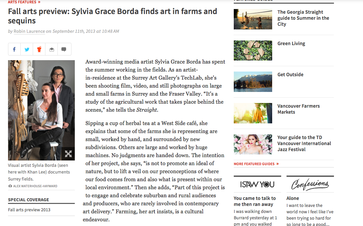
Sept 2013: Review of her exhibition work at the Surrey Art Gallery, BC (Georgia Straight Newspaper
see http://www.straight.com/arts/421776/fall-arts-preview-sylvia-grace-borda-finds-art-farms-and-sequins
-----------------------------
Round table discussions from Northern Ireland: 30 years of Photography
Panel on May 17 hosted by the MAC now on-line
Northern Ireland: 30 Years of Photography
Venue: Belfast Exposed and the MAC, Belfast City
May 9 - July 7, 2013
The Northern Irish Arts Council's collection of 'Churches: Coming to the Table' was re-staged as part of a comprehensive exhibition examining the last 30 years of image making in Northern Ireland.
Press release (May 2013)
Northern Ireland: 30 Years of Photography is being delivered as a partnership between Belfast Exposed and the MAC. It brings together significant works by key photographers to examine the phenomenon of new photographic practices that have emerged in Northern Ireland. Since the 1980s Northern Ireland has produced a distinctive body of photographic work by photographers from within and outside Northern Ireland. Many of the photographers to be included in the exhibition have established global reputations, but have not previously been considered in any sustained way as group of photographers interacting with each other’s work.
Taking a historical and thematic approach, the exhibition begins with the media imagery of ‘The Troubles’ that compelled photographers and artists to intervene in the flow of press photography that dominated a global, visual portrayal of Northern Ireland in the 1970s. From this response, an engaged and often polemic aesthetic emerged, individual to each photographer but also shared across diverse photographic practices. With the Peace Process in the 1990s a new dynamic entered the scene which required photographers to think about the social and political past and future of Northern Ireland, and which also offered new opportunities for exhibiting and publishing work.
While presenting an analysis of its broad aesthetics, the exhibition also questions the extent to which the theme of conflict has dominated our view of Northern Irish photography. The photographers presented in the exhibition have formulated their visual language and its way of seeing Northern Ireland from wider photographic influences and from the gradual acceptance of photography as a gallery-based art form. Through the inclusion of work by photographers with a keen sense of trends and debates in the wider contexts of contemporary photography and art, the exhibition presents photography in and from Northern Ireland as a reflection of place in the broadest possible sense.
The exhibition is curated by Karen Downey, Senior Curator at Belfast Exposed, and who also works as an independent curator. In 2009 she curated Northern Ireland’s presentation at the 53rd Venice Biennale with a solo exhibition by Susan MacWilliam, and in 2011 she curated Versions and Diversions at Temple Bar Gallery + Studios, Dublin. In 2012 she was Lead Curator and Editor for Into the Light: The Arts Council – 60 Years of Supporting the Arts.
The exhibition is accompanied by a substantial publication, Northern Ireland: 30 Years of Photography by Colin Graham. Colin Graham lectures at NUI Maynooth, and was previously Reader in English at Queen’s University Belfast. He is the author of Ideologies of Epic and Deconstructing Ireland. He is co-editor of the journal The Irish Review, and of three collections of essays. He has published articles in many journals, including Cultural Studies, Third Text, Journal of Visual Culture, Irish Studies Review, The Dublin Review and Source.
|
BOOK RELEASE
Cities and Photography by Jane Tormey Published by Routledge | 266 pages ISBN 978-0-415-56440-3 Included in the publication are references to the artist's projects "Capital Cities" & "Every Bus Stop in Surrey, BC" About the book: Photographs display attitudes, agency and vision in the way cities are documented and imagined. This text offers introductions to theoretical conceptions of the city that are useful to photographers addressing urban issues, as well as discussing themes that have preoccupied photographers and informed cultural issues central to a discussion of city. Tormey interprets the city as a spatial network that we inhabit on different conceptual, psychological and physical levels, and gives emphasis to how people operate within, relate to, and activate the city via construction, habitation and disruption. Emphasis is given to international, contemporary photographic projects to provide provide focus for the discussion of theoretical conceptions of the city through the analysis of photographic interpretation and commentary. |
Cities and Photography aims to demonstrate the potential of photography as a contributor to commentary and analytical frameworks: what does photography as a medium provide for a vision of ‘city’ and what can photographs tell us about cities, histories, attitudes and ideas?
|
|
BLUEPRINT, Street Level Photoworks, Glasgow
As part of the exhibition, Blueprint, the artist delivered a series of talks including The Agency of Light (Feb 21) examining photogram histories from the advent of photography to present; undertook a public tour and Q&A session with Colin Gray about the works on display (Feb 16); and spoke to City of Glasgow College Photography students (March 5) about contemporary photographic delivery and image research methods. |
